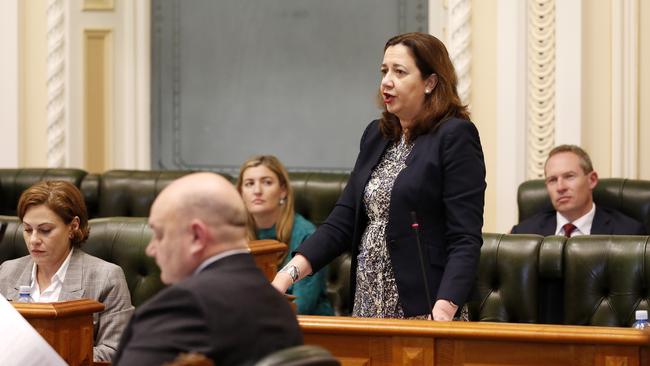Brisbane ‘rent caps’ a test case for the property market
Property investors across Australia will be keenly watching Queensland as its government considers rent increase controls.

The prospect of rent controls in the Brisbane property market has now arrived as the Palaszczuk government debates “options” to limit rent increases.
Brisbane was always going to be the city where this issue would boil over, because it is facing what is probably the worst rent crisis in the country.
What’s more, the Queensland government has already shown a willingness to experiment with out-of-the-box ideas when it comes to property ownership.
Last year, the state government tried to launch a nationwide property tax where Queenslanders and “non-Queenslanders” holding property in other states would be trapped in a new tax net. That scheme has since been abandoned.
But a few months later Premier Annastacia Palaszczuk is now talking of possibilities such as limiting rent increases to once a year.
The heart of the matter here is market invention – or re-regulation. One move to redirect market activity can quickly lead to another.
Certainly, anything that smacks of rent control will result in investors avoiding the city of Brisbane at a time the city needs more rental stock supply than ever before.
There are rent shortages in every city across the country – and across the world – right now. Consequently, the Queensland debate is set to become a precedent for the whole country.
Even by current standards, Brisbane’s 0.8 per cent vacancy rate suggests a city where there is effectively nothing to rent.
Against this backdrop, anti-landlord sentiment will run high when there are stories of genuine struggle, and the “free tent” program established by the St Vincent De Paul in Brisbane in 2022 shows the depth of the problem.
Similarly, arguments that the supply of housing stock from private investors is crucial to fixing the city’s problem will be shot down.
Still, the reality is that the vast bulk of private rentals in Australia are owned by private investors; typically mum-and-dad investors often using negative gearing. Rent control measures are rare, with the exception of a limited scheme inside the ACT.
At the peak of the market in late 2021 many of these mum-and-dad investors got out of the Brisbane market as home prices reached a peak.
The arrival of a rent control regime in the city will not bring those investors back anytime soon.
In fact, there is strong evidence overseas that rent caps or rent controls of any kind do not work.
Just two weeks ago in Glasgow, Scotland, a £200m build-to-rent project was halted by the developer who claimed the city’s rent control laws now meant “the project was uncertain”. Glasgow has had a temporary ban on rent rises since last September and a plan for a 3 per cent cap on rent rises from next month.
Meanwhile, in Helsinki, Finland, where there had been rent controls until the 1990s, a two decade policy of assisting housing initiatives and deregulating the market in tandem has brought about clearly improved outcomes.
The share of the population in rental property in Finland has stayed steady at 16 per cent for years while “homelessness has shrunk remarkably”, according to an OECD report which noted the country’s deft use of financial assistance coupled with achieving more supply through deregulation.
As we said right here in September last year Brisbane faces worst rental crisis in country
after the exit of investors brought Brisbane’s rental stock to half of its usual level. The city looks like it will be stuck with its “nothing to rent market” for some time.
The answer surely is a mixture of initiatives not re-regulation. As CoreLogic’s Eliza Owen has suggested, the city needs investors and build-to-rent schemes and social housing.
But Real Estate Institute of Queensland chief executive Antonia Mercorella says: “In the middle of a housing crisis caused by lack of housing supply, it’s beyond belief that the government is now proposing a measure which innately discourages further supply … what’s happening here is they are talking about punishing investors.”



